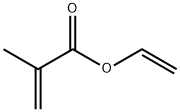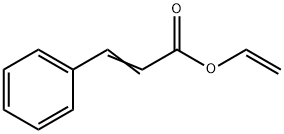Vinyl bromide
Synonym(s):Bromoethylene
- CAS NO.:593-60-2
- Empirical Formula: C2H3Br
- Molecular Weight: 106.95
- MDL number: MFCD00000183
- EINECS: 209-800-6
- SAFETY DATA SHEET (SDS)
- Update Date: 2025-09-25 17:15:13

What is Vinyl bromide?
Chemical properties
colourless liquid
Chemical properties
Vinyl bromide is a colorless gas or liquid at low ambient temperature. Pleasant odor. Shipped as a liquefied compressed gas with 0.1% phenol added to prevent polymerization.
The Uses of Vinyl bromide
Vinyl bromide is used as a fire retardant inplastics.
The Uses of Vinyl bromide
Production of flame-resistant plastics or thermoplastic resins.
Production Methods
VB can be produced by the catalytic addition of hydrogen bromide to acetylene in the presence of mercury and copper halide catalysts or by partial dehydrobromination of ethylene dibromide with alcoholic potassium hydroxide.
Definition
ChEBI: Bromoethene is a monohaloethene and a bromoalkene.
General Description
Boiling point 60°F. Liquid at low ambient temperatures. Specific gravity 1.51. A suspected carcinogen. Under exposure to fire or heat containers may rupture violently and rocket.
Air & Water Reactions
Highly flammable, with air forms peroxides
Reactivity Profile
VINYL BROMIDE is a light sensitive, peroxidizable monomer may initiate exothermic polymerization of the bulk material [Handling Chemicals Safely 1980.. p. 958]. Vinyl bromide will react violently with oxidants.
Health Hazard
Vapors may cause dizziness or asphyxiation without warning. Some may be toxic if inhaled at high concentrations. Contact with gas or liquefied gas may cause burns, severe injury and/or frostbite. Fire may produce irritating and/or toxic gases.
Health Hazard
Inhalation of this gas at high concentrationscan produce anesthesia and kidney damage.Exposure to 2.5% concentration in air pro duced anesthetic effects in rats. A 15-minuteexposure to 10% concentration was fatal torats (ACGIH 1986). Kidney injury occurredat a 5% exposure level. Human toxicity datafor this compound are not available. The liq uid is mild to moderately irritating to theeyes.
Vinyl bromide manifested carcinogenicproperties in laboratory animals. It producedliver and blood tumors in rats and mice.Its cancer-causing effects in humans arenot known. However, on the basis of itssimilarity to vinyl chloride, it is suspectedto be a human carcinogen.
Fire Hazard
EXTREMELY FLAMMABLE. Will be easily ignited by heat, sparks or flames. Will form explosive mixtures with air. Silane will ignite spontaneously in air. May polymerize explosively when heated or involved in a fire. Vapors from liquefied gas are initially heavier than air and spread along ground. Vapors may travel to source of ignition and flash back. Cylinders exposed to fire may vent and release flammable gas through pressure relief devices. Containers may explode when heated. Ruptured cylinders may rocket.
Safety Profile
Confirmed carcinogen with experimental carcinogenic, neoplastigenic, and tumorigenic data. Moderately toxic by ingestion. Mutation data reported. A very dangerous fire hazard when exposed to heat or flame. Can react violently with oxidzing materials. May polymerize in sunlight. To fight fire, use CO2, dry chemical, or water spray. When heated to decomposition it emits toxic fumes of Br-. See also BROMIDES and VINYL CHLORIDE.
Potential Exposure
Vinyl bromide is used as an intermediate in organic synthesis and for the preparation of plastics by polymerization and copolymerization; as a comonomer with acrylonitrile and other vinyl monomers in modacrylic fibers; in the production of flame-retardant synthetic fibers.
Carcinogenicity
Vinyl bromide is reasonably anticipated to be a human carcinogenbased on sufficient evidence of carcinogenicity from studies in experimental animals.
Shipping
UN1085 Vinyl bromide, stabilized, Hazard Class: 2.1; Labels: 2.1-Flammable gas. Cylinders must be transported in a secure upright position, in a well-ventilated truck. Protect cylinder and labels from physical damage. The owner of the compressed gas cylinder is the only entity allowed by federal law (49CFR) to transport and refill them. It is a violation of transportation regulations to refill compressed gas cylinders without the express written permission of the owner.
Incompatibilities
Vinyl bromide is a dangerous chemically unstable compound that may polymerize spontaneously in heat, sunlight and possibly exposure to UV. Dangerously reactive with oxidizers (chlorates, nitrates, peroxides, permanganates, perchlorates, chlorine, bromine, fluorine, etc.); contact may cause fires or explosions. Keep away from alkaline materials, acetylene, strong acids, strong bases, copper compounds. Add 0.1% phenol to gas to prevent polymerization.
Waste Disposal
Return refillable compressed gas cylinders to supplier. Nonrefillable cylinders should be disposed of in accordance with local, state and federal regulations. Allow remaining gas to vent slowly into atmosphere in an unconfined area or exhaust hood. Refillabletype cylinders should be returned to original supplier with any valve caps and outlet plugs secured and valve protection caps in place.
Properties of Vinyl bromide
| Melting point: | −139 °C(lit.) |
| Boiling point: | 16 °C750 mm Hg(lit.) |
| Density | 1.517 g/mL at 25 °C(lit.) |
| vapor density | 3.8 (15 °C, vs air) |
| vapor pressure | 1551 mm Hg ( 37.8 °C) |
| refractive index | n |
| Flash point: | 1 °F |
| storage temp. | 2-8°C |
| form | Gas |
| color | Colorless to Almost colorless |
| explosive limit | 15% |
| Water Solubility | insoluble |
| BRN | 1361370 |
| Exposure limits | TLV-TWA 5 ppm (~22 mg/m3)(ACGIH);
Lowest Detectable Level (NIOSH); car cinogenicity: Suspected Human Carcinogen
(ACGIH), Animal Sufficient Evidence
(IARC). |
| Dielectric constant | 4.8(25℃) |
| Stability: | Stable, but may polymerize in sunlight. Reacts violently with all types of oxidizer. Incompatible with strong oxidizing agents, peroxides, copper, copper alloys, plastics. Highly flammable. |
| CAS DataBase Reference | 593-60-2(CAS DataBase Reference) |
| IARC | 2A (Vol. 39, Sup 7, 71, 97) 2008 |
| NIST Chemistry Reference | Ethene, bromo-(593-60-2) |
| EPA Substance Registry System | Vinyl bromide (593-60-2) |
Safety information for Vinyl bromide
| Signal word | Danger |
| Pictogram(s) |
 Flame Flammables GHS02  Gas Cylinder Compressed Gases GHS04  Exclamation Mark Irritant GHS07  Health Hazard GHS08 |
| GHS Hazard Statements |
H220:Flammable gases H280:Gases under pressure H302:Acute toxicity,oral H350:Carcinogenicity |
| Precautionary Statement Codes |
P201:Obtain special instructions before use. P202:Do not handle until all safety precautions have been read and understood. P264:Wash hands thoroughly after handling. P264:Wash skin thouroughly after handling. P301+P312:IF SWALLOWED: call a POISON CENTER or doctor/physician IF you feel unwell. P308+P313:IF exposed or concerned: Get medical advice/attention. P410+P403:Protect from sunlight. Store in a well-ventilated place. |
Computed Descriptors for Vinyl bromide
| InChIKey | INLLPKCGLOXCIV-UHFFFAOYSA-N |
Vinyl bromide manufacturer
ALS India Life Sciences Pvt. Ltd
New Products
4,4-Difluoropiperidine hydrochloride tert-butyl 9-methoxy-3-azaspiro[5.5]undecane-3-carboxylate Indole Methyl Resin N-Isopropylurea N,N-Dicyclohexylcarbodiimide(DCC) MELDRUMS ACID 5-METHYLISOXAZOLE-4-CARBOXYLIC ACID Magnessium Bis glycinate Zinc ascorbate 1-bromo-2-butyne 2-acetamidophenol 9(10H)-anthracenone Erythrosin B, 4-Piperidinopiperidine 2-((4-morpholinophenylamino) (methylthio) methylene) malononitrile 2,4-dihydroxybenzaldehyde 3-(4-morpholinophenylamino)-5-amino-1H-pyrazole-4-carbonitrile Methyl 2-methylquinoline-6-carboxylate 2,6-dichloro-4-nitropyridine 4-Bromo-2-chlorobenzonitrile 2-(benzylamino)acetic acid hydrochloride 4-(tert-Butoxycarbonylamino)but- 2-ynoic acid 3,4-dihydro-2H-benzo[b][1,4]dioxepine 1-Phenyl-1-cycloprppanecarboxylicacidRelated products of tetrahydrofuran








You may like
-
 593-60-2 Vinyl Bromide in Tetrahydrofuran 1Molar Solution 99%View Details
593-60-2 Vinyl Bromide in Tetrahydrofuran 1Molar Solution 99%View Details
593-60-2 -
 Vinyl bromide 593-60-2 98%View Details
Vinyl bromide 593-60-2 98%View Details
593-60-2 -
 Vinyl Bromide (1.0 M in THF) 593-60-2View Details
Vinyl Bromide (1.0 M in THF) 593-60-2View Details
593-60-2 -
 Vinyl Bromide (ca. 14% in Ethyl Ether, ca. 1.0mol/L) CAS 593-60-2View Details
Vinyl Bromide (ca. 14% in Ethyl Ether, ca. 1.0mol/L) CAS 593-60-2View Details
593-60-2 -
 Vinyl Bromide (ca. 12% in Tetrahydrofuran, ca. 1.0mol/L) CAS 593-60-2View Details
Vinyl Bromide (ca. 12% in Tetrahydrofuran, ca. 1.0mol/L) CAS 593-60-2View Details
593-60-2 -
 Vinyl bromide solution CAS 593-60-2View Details
Vinyl bromide solution CAS 593-60-2View Details
593-60-2 -
 593-60-2 Vinyl bromide 98.00%View Details
593-60-2 Vinyl bromide 98.00%View Details
593-60-2 -
 20677-73-0 (2,2-diethoxyethyl)methylamine 98%View Details
20677-73-0 (2,2-diethoxyethyl)methylamine 98%View Details
20677-73-0
